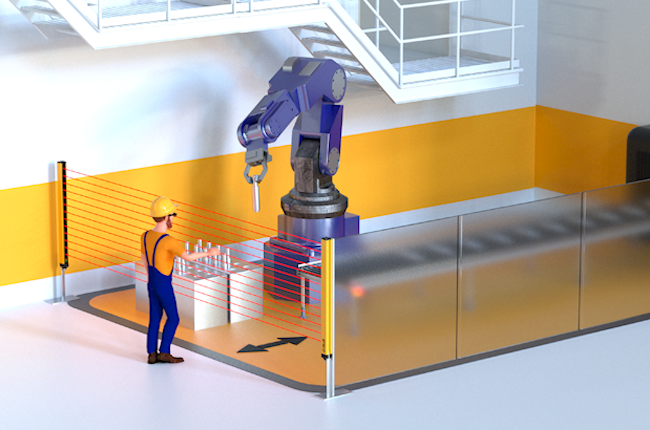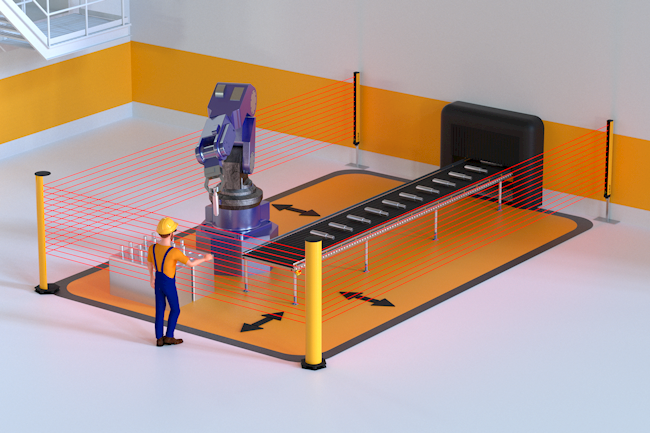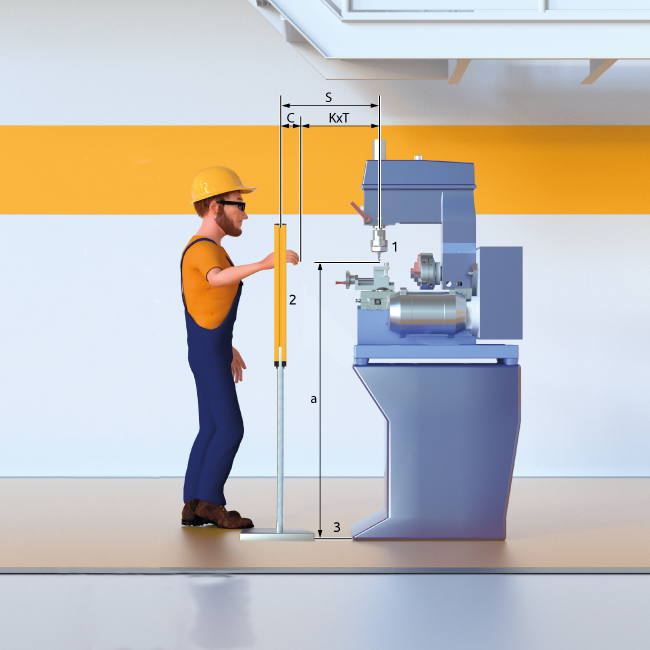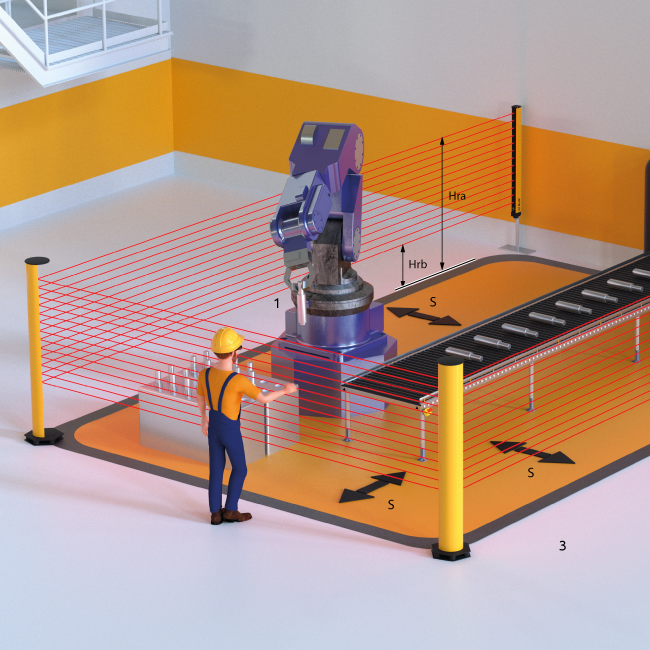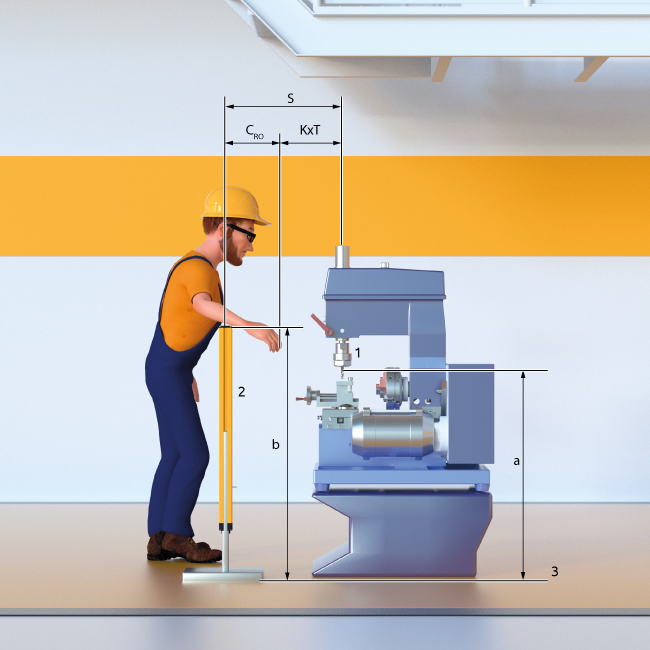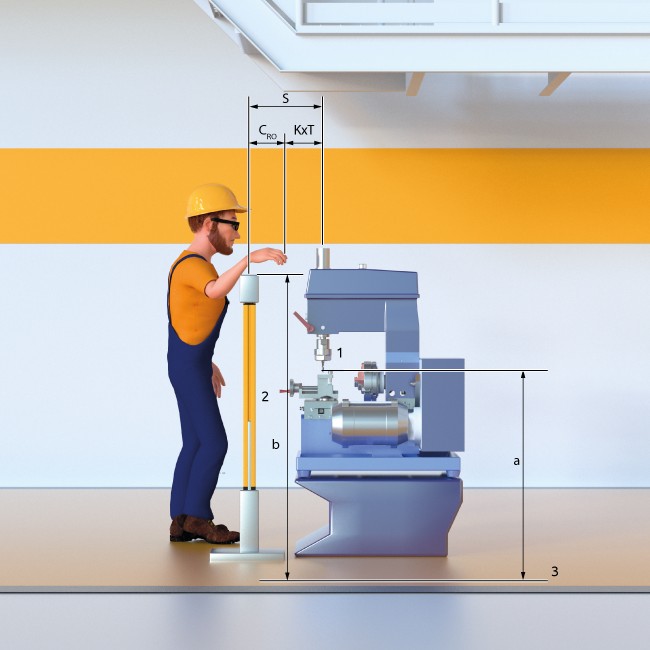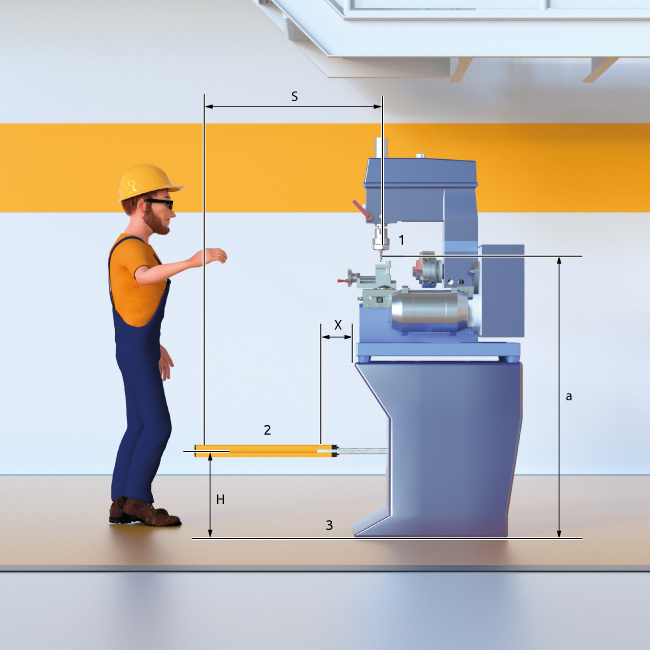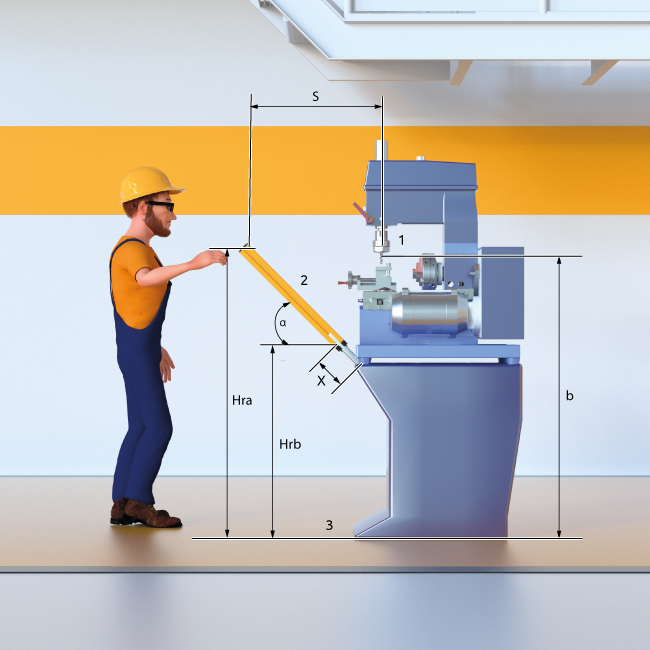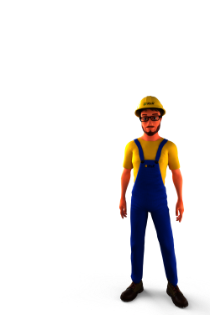The effectiveness of the protection depends greatly on the correct positioning of the light curtain with respect to the danger.
The light curtain must be located at a distance greater than or equal to the minimum safety distance S, so that reaching the dangerous point will be possible only when the dangerous action of the machine has been stopped.
The light curtain must be positioned so that:
- It is impossible to reach the dangerous point without going through the zone controlled by the light curtain.
- A person cannot be present in the dangerous zone without his/her presence being detected. To this end, it might be necessary to resort to additional safety devices (i.e..: photoelectric light curtains arranged horizontally).
European Standard EN ISO 13855 provides the elements for the determination of the safety distance.
If the machine in object is governed by a specific C type Standard, it shall be taken into due account.
If the distance S determined in this manner is too big, it is necessary:
- To reduce the total stopping time of the machine
- To improve the detection capability (resolution) of the light curtain.
